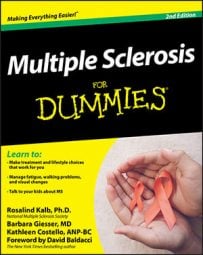When symptoms of multiple sclerosis (MS) such as weakness, balance problems, or stiffness make carrying out daily activities more difficult, you may find yourself having to work harder to do the same things that you did before — which will probably leave you feeling a lot more tired.
If, for example, getting dressed, making breakfast, climbing in and out of your car, and walking from your car to your office takes more effort, you may have used up all your energy before the day even starts. Your energy supply is similar to a bank account: The larger and more frequent your withdrawals, the sooner you run out of resources.
The best approach to managing your fatigue is to begin thinking creatively about how you carry out your daily activities. The following list suggests ways to streamline those activities in order to make the best use of your energy supply.
As you think about how to apply these ideas at home and at work, remember that the rehabilitation specialists on your healthcare team are the experts when it comes to energy management and labor-saving strategies. Here’s the list of tips:
Open up the tool chest. The perfect time to put AT to use is when your fatigue is negatively affecting your daily life. Why stand in the shower when you can sit on a shower chair? Why use a manual can opener when an electric one can do the job faster and with less effort?
Take a careful look at all the gadgets that have been designed to make life easier for you. Visit Abledata to discover what AT has to offer, and check out the Maddak catalog and Independent Living for a quick look at some creative gadgets and tools for everyday use.
Using a mobility aid, such as a cane or motorized scooter, can help you conserve energy for the important things. What’s the point of using all your energy to get from point A to point B if you’re too tired to enjoy yourself once you get there?
Substitute organization for effort. Make sure that your work spaces at home and at the office are well organized and readily accessible. For example, why put the items you use most in out-of-the-way places? And why put the tools you need for a particular task in six different places when you can store them together?
Ask for reasonable accommodations in the workplace. Think how much energy and effort you would save if you had a parking spot closer to the building, an office closer to the bathroom, and a flex-time schedule that allowed you to work during your high-energy hours.
Make things easier for yourself — not more difficult. For example, plan meals that require a minimum of preparation, and gather all your ingredients in one place before starting to cook. Make your bed one side at a time to avoid trips back and forth. Throw the laundry bag down the basement stairs rather than trying to carry it.
The possibilities are endless. Check out the book by Shelley Peterman Schwarz called 300 Tips for Making Life with Multiple Sclerosis Easier, 2nd edition (Demos Medical Publishing).
Give yourself permission to do things differently and ask for assistance when you need it. One of the biggest hurdles to dealing with MS fatigue is getting used to the idea that you may not be able to do everything the way you did it before. After you’ve decided that it’s okay to adapt to the changes, you’ll be able to come up with creative strategies and workarounds to save energy and time.

